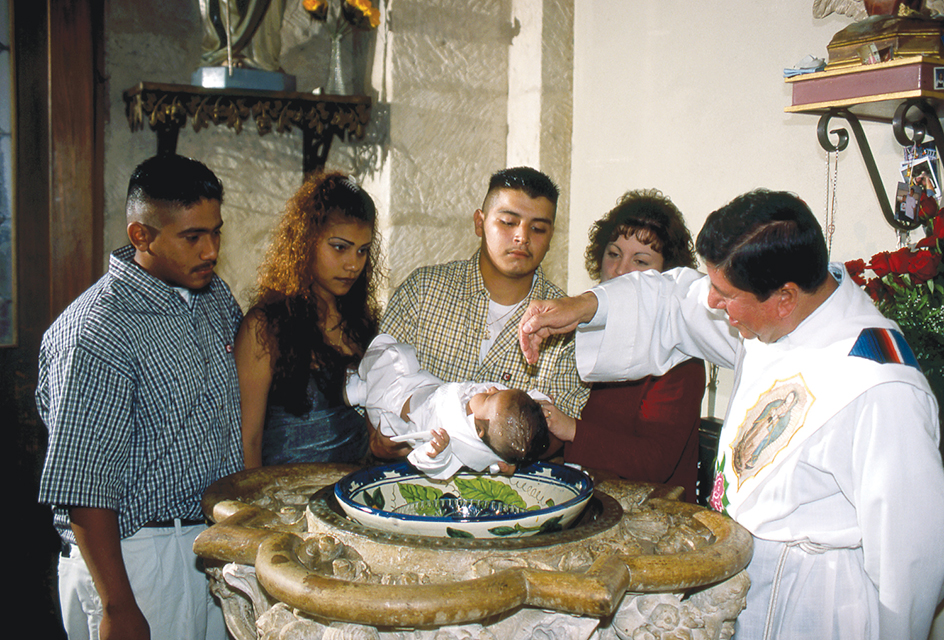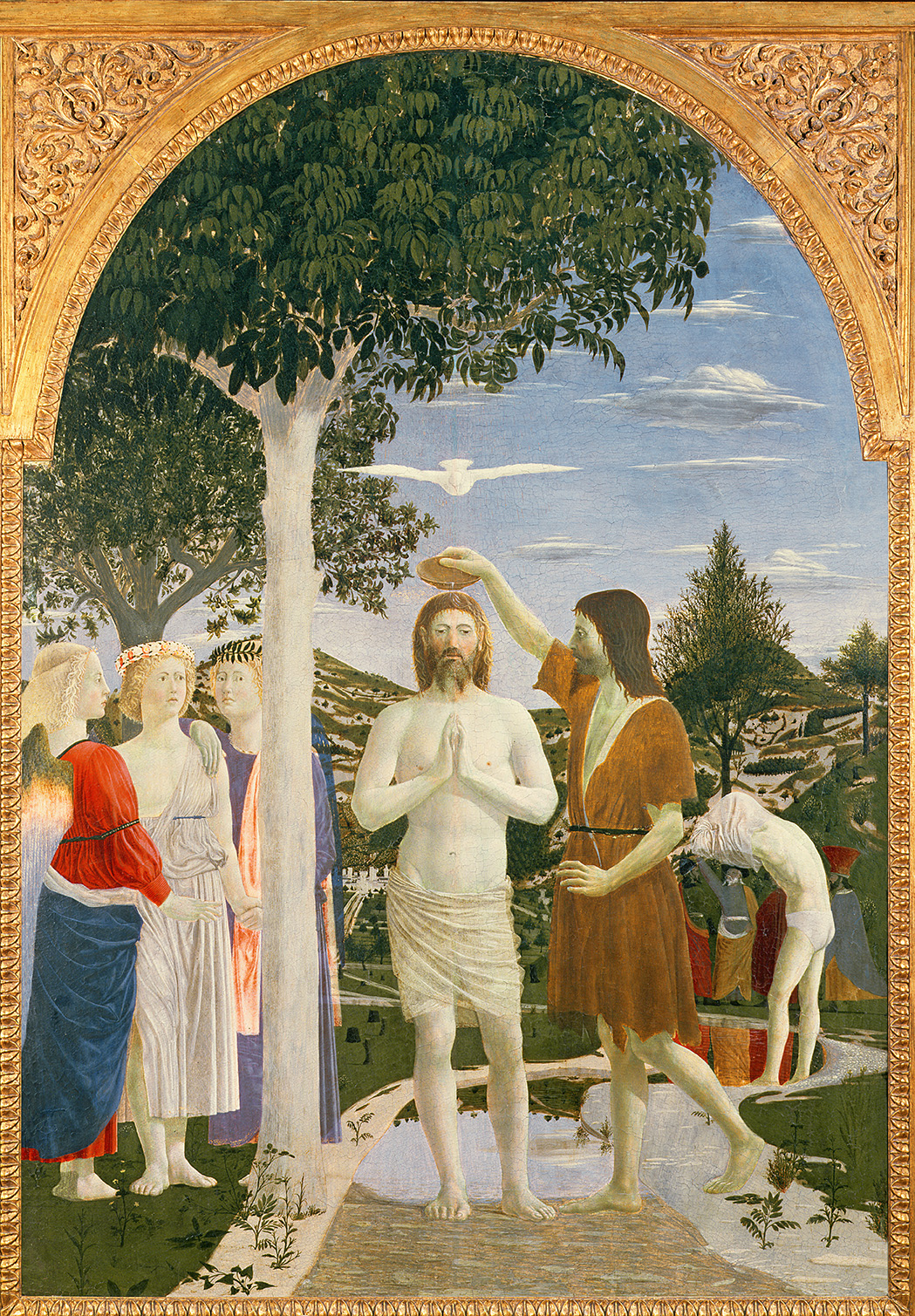Baptism is a symbolic washing with water as a religious practice. It indicates or transmits purification, the washing away of sins, and the start of a renewed life. Baptism is most important in the Christian religion. But many other religions include ceremonies that are similar to baptism.
Nearly all Christian churches baptize. They follow the example of Saint John the Baptist and the instructions of Jesus Christ and Saint Paul, as set forth in the New Testament. Most churches consider baptism to be the main ceremony signifying a person’s entry into the Christian community.

In a typical Christian baptism ceremony, the person being baptized makes a statement of faith in Jesus. Sponsors, called godparents, may make the statement on behalf of infants. In most cases, a priest or minister then pronounces the person’s name and administers the water, saying, “I baptize you in the Name of the Father, of the Son, and of the Holy Spirit,” or similar words. Often, infants are christened (named) during the baptism ceremony. Christening also refers to baptism itself.
The meaning and procedure of baptism vary among Christian churches. For example, the Anglican, Eastern Orthodox, Lutheran, Methodist, Reformed, and Roman Catholic churches consider baptism a sacrament or ordinance. According to these churches, baptism gives or expresses God’s grace in a person, regardless of the individual’s awareness of it. As a result, they baptize infants as well as adults. Most of these churches usually administer baptismal water by pouring or sprinkling it. The Eastern Orthodox Churches practice immersion (submerging a person into water).

Baptist and similar churches believe that baptism should follow a voluntary, public statement of faith in Jesus Christ as savior. Therefore, they do not baptize people who are too young to realize the significance of such a statement.
